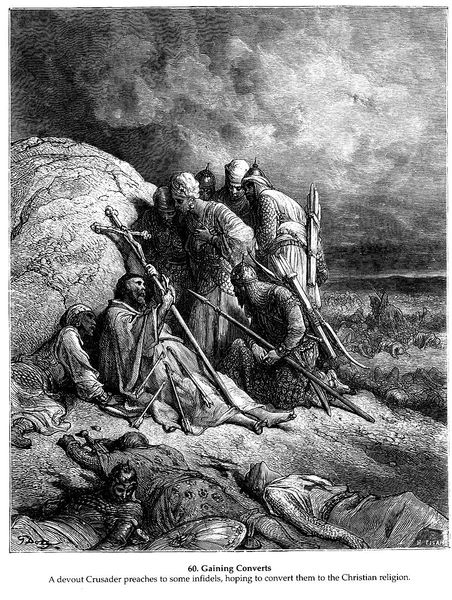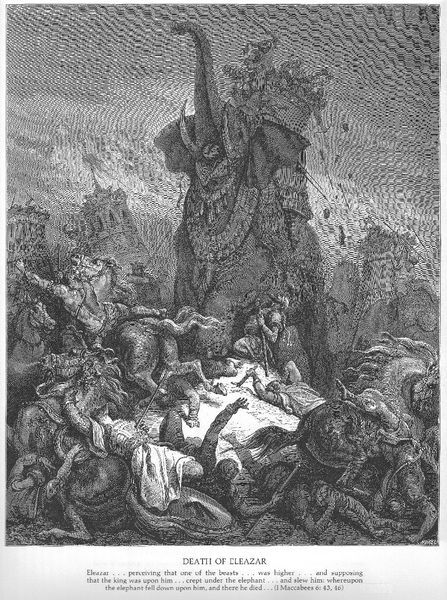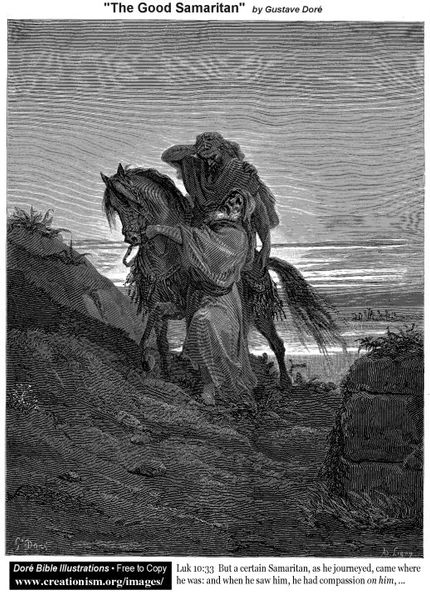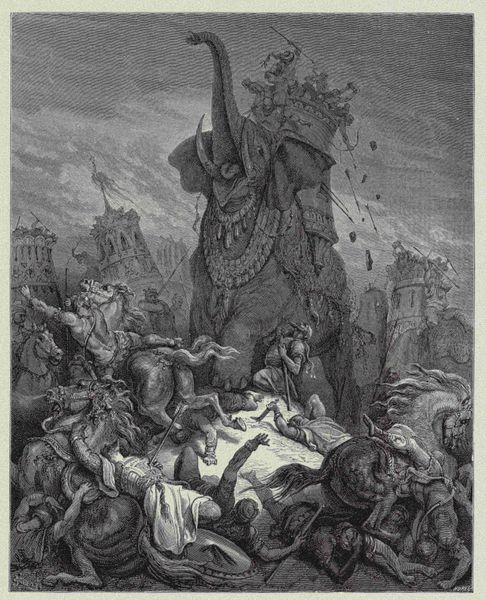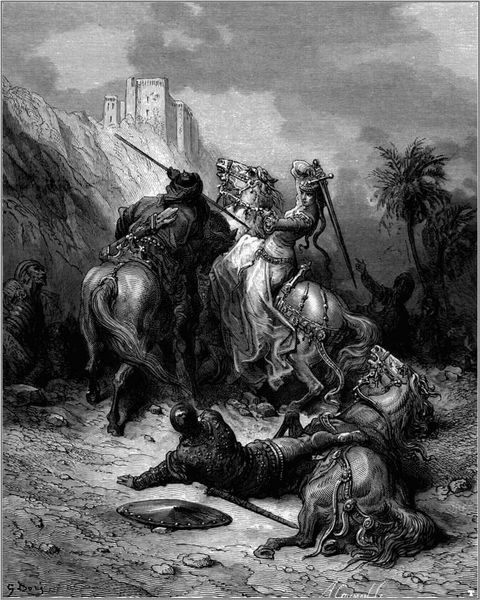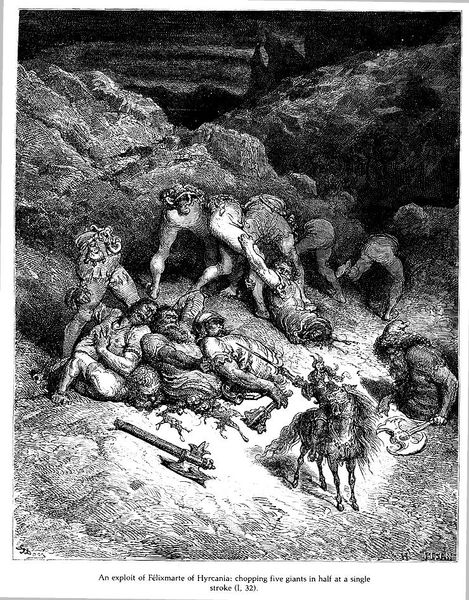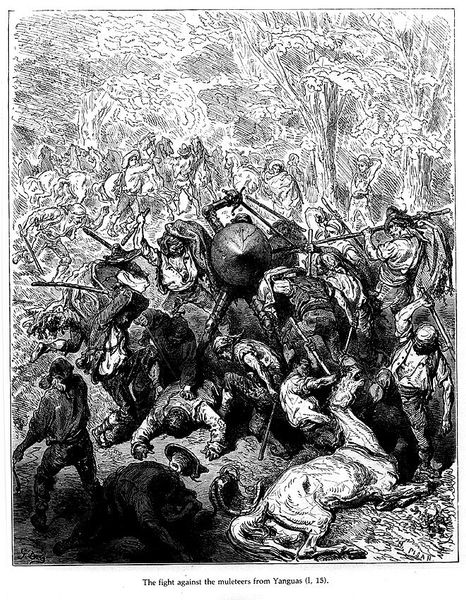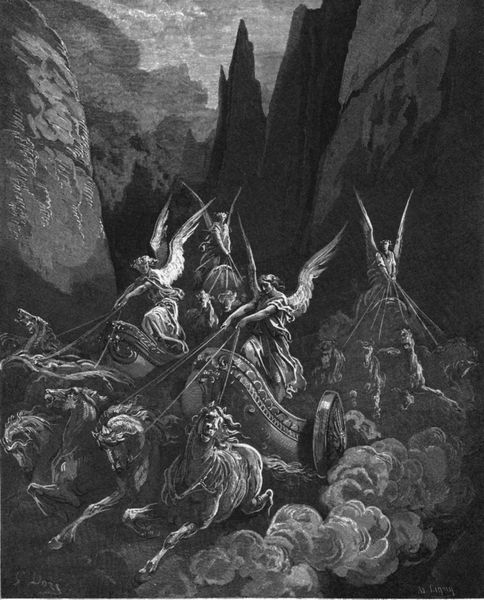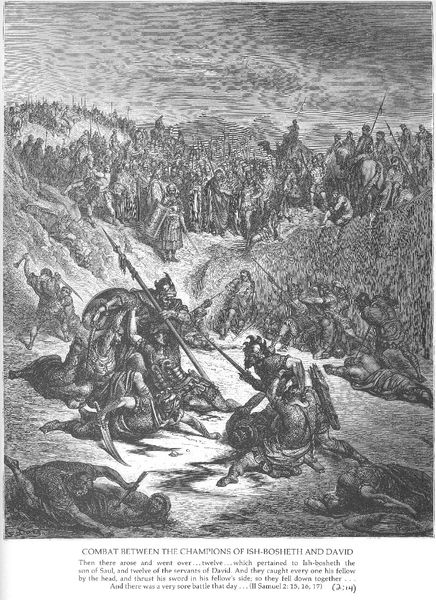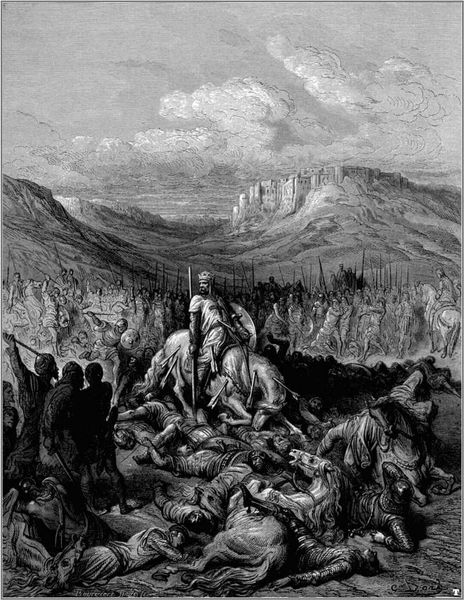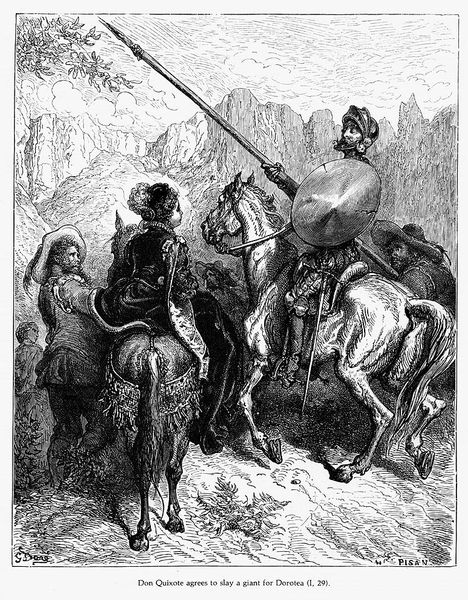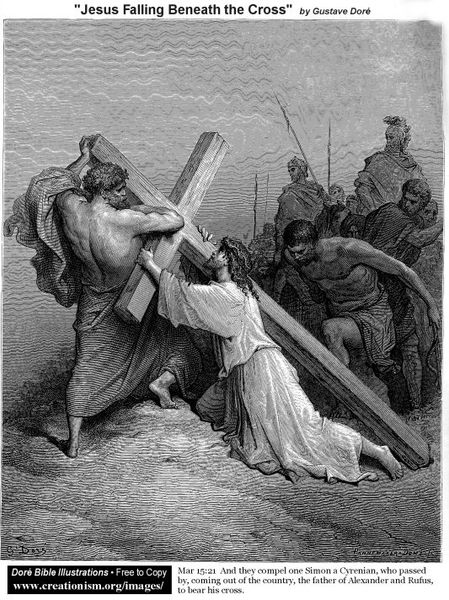
drawing, print, engraving
#
drawing
#
narrative-art
# print
#
war
#
landscape
#
figuration
#
romanticism
#
orientalism
#
line
#
islamic-art
#
history-painting
#
engraving
Copyright: Public domain
Gustave Doré created this print of Saladin sometime in the 19th century. In it, we see the Sultan of Egypt astride a warhorse, his sword raised in triumph, with fallen soldiers at his feet. Doré was one of the most successful illustrators of his day, and this image was likely commissioned for a popular illustrated book. Prints like this played an important role in shaping European ideas about the Middle East. The heroic pose and dramatic lighting create a romantic vision of Saladin, which is striking given the history of conflict between Europe and the Islamic world. Doré’s image reflects a long tradition in European art of representing non-Western cultures as both exotic and dangerous. To understand the visual codes that Doré employs, one might research the images and texts that circulated at the time in France. One could investigate the visual rhetoric of colonialism. Understanding the social and institutional context is crucial to interpreting its meanings and understanding its legacies.
Comments
No comments
Be the first to comment and join the conversation on the ultimate creative platform.
